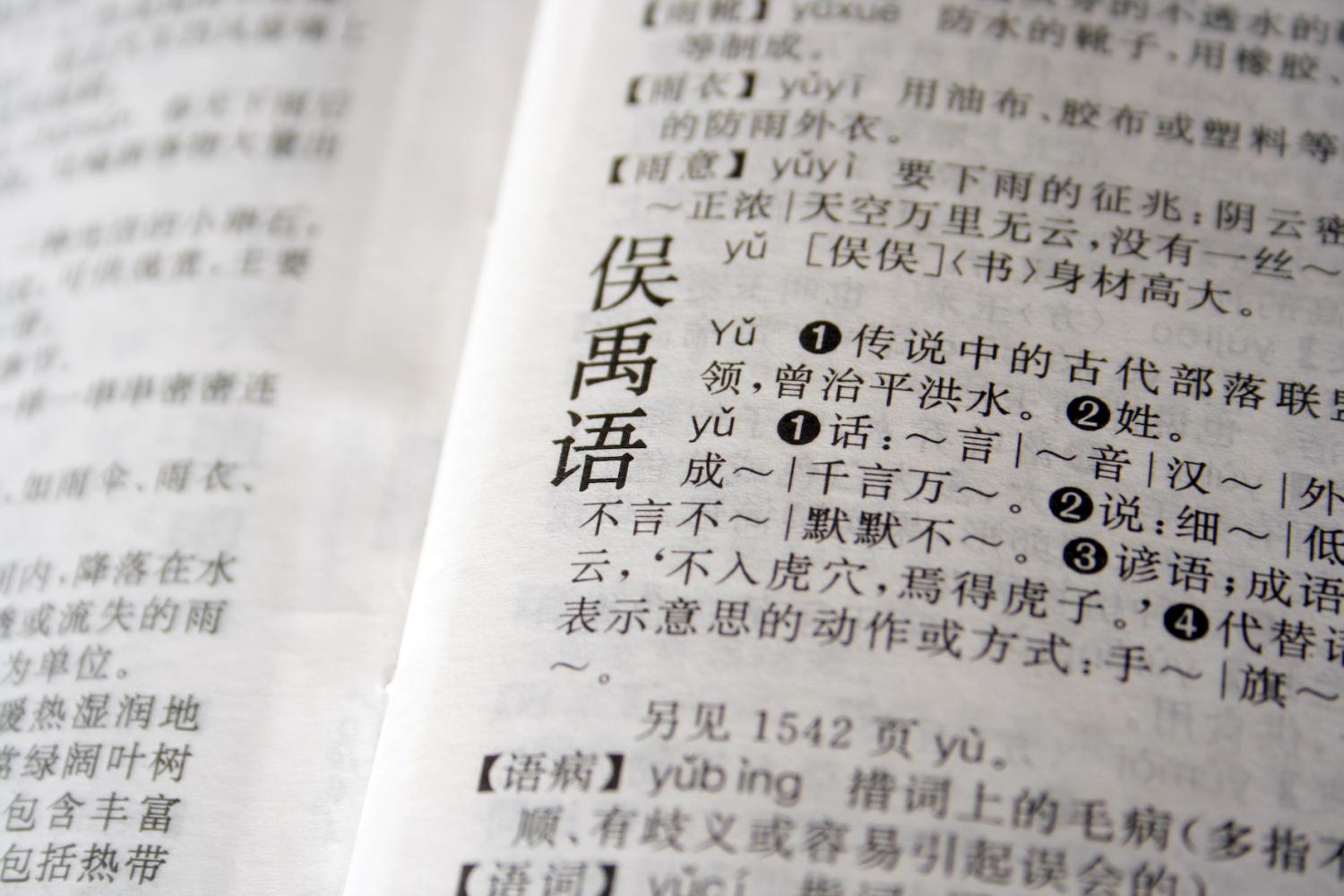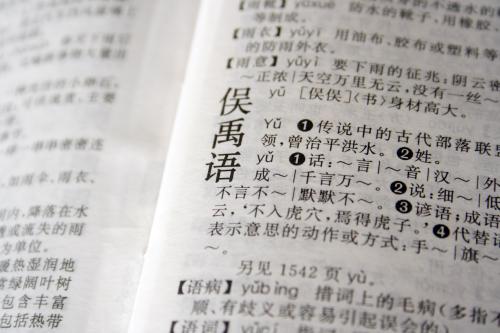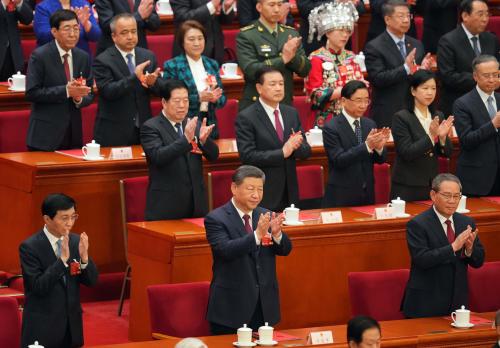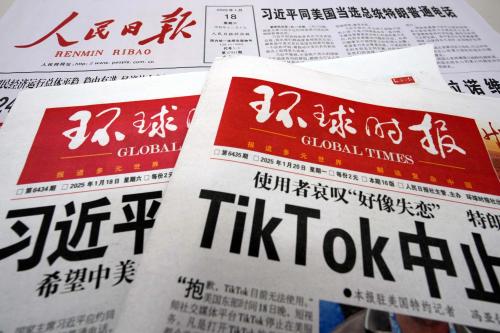This is the 10th essay of Global China’s “Lost in translation: Decoding Chinese strategic narratives” series. The full collection of essays can be found here.
Strategic stability is an important issue between China and the United States. Security experts from both countries have some similar and differing views on how to address this issue. They are always highly sensitive to changes in the other side’s policies and technologies, but less sensitive to changes within their own countries. To help improve China-U.S. relations, we should also strive to better understand each other’s concerns. For example, when U.S. experts discuss how China is developing nuclear weapons, it is important to understand Chinese security experts’ views on the U.S. development of missile defense systems. This mutual understanding serves as the starting point for jointly seeking mutually tolerable solutions. This paper aims to explore Chinese security experts’ perspectives on strategic stability issues and related engagements between China and the United States.
Two schools of strategic stability
Chinese security experts define strategic stability as falling into two categories, each with a different philosophical foundation. One school takes a holistic approach, viewing strategic stability as comprehensive stability among nations based on multiple factors. Men Honghua, a distinguished professor at Tongji University, represents this school. Men and his collaborators have published some papers outlining their research approach and its application to specific fields.1 While this school does not rule out the role of nuclear weapons in interstate stability, it views nuclear weapons as just one factor among many. This perspective has wide influence in the academic international relations community and among those who practice foreign policy. According to this school of thought, addressing nuclear issues cannot be limited to discussing nuclear weapons alone. In nuclear issue dialogues involving Chinese experts, the agendas often include some general topics. This may reflect a holistic philosophical approach.
Another group of Chinese scholars takes a reductionist approach, viewing strategic stability as a situation in which there are low incentives to launch nuclear attacks and engage in arms races.2 This aligns with the original thinking behind strategic stability theory. Some technical experts, such as myself, and military scholars, for example, Lu Yin, take this approach. These scholars often engage in nuclear strategy-related research and participate in various types of nuclear dialogues. While their academic influence is somewhat narrower, their views are more targeted. This paper focuses on the views of this school.
Chinese scholars are concerned with how nuclear forces and non-nuclear factors, such as missile defense systems and cyber, impact strategic stability. Some scholars go even further. Drawing on nuclear stability as a reference point, they examine stability in other military domains, such as outer space. This article reviews Chinese authors’ discussions of strategic stability and the ways to reduce the risk of nuclear war.
Chinese views on U.S.-China strategic stability
The nuclear threat from the United States was an important reason, if not the only reason, why Chinese leaders decided to develop nuclear weapons in the 1950s. They hoped to establish a limited nuclear retaliation capability to counter potential nuclear threats.3 This approach of deterring external nuclear strikes by developing retaliatory capabilities aligns with the reductionist theory of strategic stability.
The primary challenge to China-U.S. strategic stability stemmed from the big disparity in nuclear weapons between the two countries. Chinese security experts often express significant concern when discussing this disparity.4 Generally, China’s growth in nuclear weapons helps ensure mutual nuclear retaliatory capabilities, maintaining strategic stability with the United States. However, some U.S. security experts are concerned about the growth of China’s nuclear arsenal because they are used to having nuclear superiority over China and do not think about it in terms of strategic stability.
After acquiring long-range nuclear weapons in the 1980s, China maintained a very small arsenal for a long time. In the event of a nuclear strike by other countries, this small arsenal could hardly ensure survivability. Thus, at the time, China had no choice but to rely on “quantitative ambiguity” to protect the survivability of its nuclear weapons.5 This meant that China did not disclose the number of its nuclear weapons, thereby reducing adversaries’ confidence in the success of a nuclear strike. However, as time passed and the United States’ detection capabilities improved, relying solely on quantitative ambiguity was no longer sufficient. Therefore, China adopted technical measures to enhance the survivability of its nuclear weapons, improving their mobility by developing submarine-launched and land-based mobile missiles.
Meanwhile, the United States continued to develop technical measures to reduce the survivability of China’s nuclear weapons, a strategy known as damage limitation. For instance, the United States has strengthened its detection capabilities against Chinese nuclear submarines in the South China Sea and the Pacific Ocean. The United States uses anti-submarine warfare tactics to curb China’s sea-based nuclear retaliation capabilities. Additionally, the United States is attempting to develop space-based monitoring capabilities for land-based mobile missiles, thereby suppressing China’s land-based nuclear retaliation capabilities.6
Chinese security experts are most alarmed by the development of the U.S. missile defense system.7 In the 1980s, they were concerned about the Strategic Defense Initiative, particularly the deployment of weapons in space and the prospect of space becoming a battlefield.8 China’s diplomatic efforts regarding the non-weaponization of outer space stem from this concern. In the late 1990s, the United States began focusing on ground- and sea-based kinetic interceptor technology to establish a missile defense system that would protect the U.S. homeland. Since the United States has many nuclear weapons, a hypothetical U.S. nuclear strike would destroy most of China’s nuclear weapons. Therefore, very few of China’s nuclear weapons would survive. The United States would only need a small number of interceptors to deal with these surviving Chinese nuclear weapons. Chinese scholars have expressed strong concerns about the threat that the development of the U.S. missile defense system poses to strategic stability between China and the United States.9 In response to Chinese criticism, the United States has not offered a substantial explanation, only stating that the intent of developing a homeland missile defense system is not directed at China and is defensive in nature.
Following the Trump administration’s recent announcement of the Golden Dome missile defense system’s development, Chinese scholars once again criticized the system for undermining strategic stability. Guo Xiaobing of the Institute of Contemporary International Relations noted that the Golden Dome represents the first time that the United States has publicly claimed that its strategic missile defense system is aimed at peer competitors or near-peer competitors.10 From a Chinese perspective, this constitutes the United States’ public abandonment of strategic stability.
How Chinese scholars interpret U.S. debates
There has been an ongoing debate in the United States about how to view strategic stability between the United States and China. One school of thought argues that China’s nuclear retaliation capability is “a fact of life,” not a policy choice, for the United States.11 Another school of thought emphasizes that the United States cannot accept nuclear vulnerability. This implies that the United States could offset China’s nuclear retaliation capability through damage limitation measures or reduce it to an acceptable level.12 Chinese scholars are aware of the U.S. debate, and some have conducted theoretical research to understand the extent of China’s nuclear retaliation capability. Their research indicates that China’s nuclear retaliation capability is indeed limited.13
Can China’s limited nuclear retaliation capability deter the United States from launching a nuclear attack? This is an important question, and the answer lies with the United States. If the United States acknowledges that China’s nuclear retaliation capability is a fact and abandons its efforts at damage limitation vis-à-vis China, then China and the United States could maintain an asymmetric strategic stability. In reality, however, the United States has not reached such a consensus. Instead, the United States remains concerned that accepting strategic stability with China will encourage China to be more conventionally aggressive. The United States uses this “stability-instability paradox” as an additional reason to oppose mutual vulnerability, which is key to strategic stability, between China and the United States.14
Chinese scholars believe that there’s a contradiction in the United States’ actions: the United States is abandoning the principle of strategic stability, as evidenced by its efforts to strengthen damage limitation (e.g., the Golden Dome system), while the United States simultaneously wants to talk about strategic stability with China. One interpretation of this contradiction is that U.S. experts participating in U.S.-China nuclear dialogues often favor strategic stability, but they are unable to prevent U.S. decisionmakers from abandoning the principles of strategic stability in weapons deployment and development planning. From China’s perspective, it is thus necessary for China to enhance the credibility of its strategic deterrence.15
Chinese perspectives of U.S.-China strategic stability dialogues
U.S. organizers of the strategic stability dialogues often complain that their Chinese counterparts are not proactive enough. However, the Chinese organizers and participants believe they have more reason to complain about the obstacles the U.S. government has imposed on the China-U.S. strategic stability dialogues. China and the United States began discussing nuclear weapons issues as early as the 1980s. Chinese and U.S. diplomats had engaged in exchanges at venues such as the United Nations and the Geneva Conference on Disarmament. Nuclear scientists from both countries had also exchanged ideas on arms control issues. Some of the topics of discussion were directly about strategic stability, such as the nuclear winter theory, a nuclear test ban, and the Strategic Defense Initiative. While others may not be directly related to strategic stability, such as the protection of nuclear materials, these exchanges promoted mutual understanding and trust between nuclear scientists from both countries, which is conducive to strategic stability.
The Chinese side has demonstrated a high degree of enthusiasm for these dialogues that contribute to strategic stability. In the early 1990s, China hosted American nuclear scientists at its own nuclear weapons laboratory and nuclear test site, providing them with on-site demonstrations of various facilities.16 This was an active measure taken by China to build trust between the two countries. The United States had previously indicated its willingness to host Chinese nuclear scientists at the Nevada Test Site as a reciprocal gesture, but it later reneged on this commitment—refusing to host Chinese scientists. This reversal by the U.S. government had lasting negative consequences for subsequent U.S.-China strategic stability dialogues, leaving Chinese organizers constantly concerned that the U.S. government might again obstruct reciprocal cooperation in future efforts.
China and the United States established an official nuclear dialogue mechanism in the mid-1990s, the “U.S.-China Lab-to-Lab Technical Exchange Program,”17 in which both countries’ nuclear weapons laboratories participated. Although the topics of the dialogue were not always directly related to strategic stability, the engagement between the technical stewards of both countries’ nuclear forces was beneficial for promoting strategic stability. Unfortunately, this dialogue mechanism was attacked by the Cox Report of the U.S. Congress.18 The Cox Report accused China of stealing U.S. nuclear weapon designs, casting a significant shadow over strategic stability exchanges between Chinese and U.S. nuclear scientists. Not only were dialogues between Chinese and U.S. nuclear laboratories suspended, but other exchanges between nuclear scientists also faced additional obstacles, such as Chinese nuclear scientists finding it more difficult to obtain visas to enter the United States. Chinese scholars were deeply outraged by the Cox Report, which they viewed as having a severe and negative impact on U.S.-China relations.19 Later, during the George W. Bush and Obama administrations, nuclear scientists from both countries attempted to resume the “U.S.-China Lab-to-Lab Technical Exchange Program,” but were unsuccessful. The reason was that the U.S. side refused to acknowledge that the previously suspended exchanges were “mutually beneficial” to both countries.
In the late 1990s, China and the United States also initiated other nuclear dialogues. One of these was the “U.S.-China Conference on Arms Control, Disarmament, and Nonproliferation,” which continued from 1998 to 2016 at the Middlebury Institute of International Studies in Monterey, California.20 This series of dialogues was also influenced by U.S. politics. After President George W. Bush took office in 2001, his government requested that the topic of strategic stability be removed from the agenda, leaving only topics such as nuclear non-proliferation. This fully reflected the United States’ contradictory attitude toward strategic stability.
The U.S. government’s imposition of sanctions on China has also disrupted the bilateral dialogues on strategic stability. In September 2018, the United States imposed sanctions on the Equipment Development Department of the Chinese People’s Liberation Army and its leaders, including visa bans, on the grounds that the department had purchased military equipment from Russia.21 This department and its subordinate units are important sources of knowledge and human resources for strategic stability dialogues. Sanctions against this department would seriously hinder such dialogue.
Emerging technologies and strategic stability
In recent years, Chinese scholars have been very concerned about the possibility of emerging technologies triggering inadvertent nuclear conflicts, and they have examined strategic stability from this perspective. Some of these studies focus specifically on strategic stability between China and the United States,22 while others do not target specific countries but generally explore the changes that new technologies bring to strategic stability. Still other studies explore stability issues in other military domains. The emerging technologies mentioned here include outer space, cyberspace, and artificial intelligence (AI).
In the field of outer space, some scholars have drawn on the concept of nuclear strategic stability to explore the issue of outer space stability.23 Although these studies do not directly discuss how to prevent nuclear conflict and nuclear arms races, they clearly demonstrate the influence of strategic stability theory in China. Some scholars are concerned that outer space conflict may spill over into the nuclear domain due to cross-domain deterrence, and, therefore, they are assessing the relationship between outer space and nuclear stability. Their approach is to promote stability in both the outer space and nuclear weapon domains simultaneously.24
In the field of cyberspace, some scholars have also drawn inspiration from the principles of nuclear strategic stability to examine issues of stability in cyberspace.25 Some scholars are also concerned about the connection between cyberattacks and nuclear attacks; they are particularly worried that cyberattacks on nuclear command and control systems could lead to misjudgments and miscalculations in nuclear decisionmaking, potentially resulting in an inadvertent nuclear launch.26 For nuclear weapons states, inadvertent nuclear launches pose a common threat. Therefore, restraining cyber behavior to prevent an inadvertent nuclear launch is a shared interest. China and the United States have engaged in constructive dialogue on this issue.27
Many Chinese scholars are also concerned about AI’s impact on strategic stability and are scrutinizing the application of AI in the deployment and employment of nuclear forces. While they acknowledge that AI improves military efficiency, they also worry that it increases the possibility of accidental crisis escalation, which could negatively impact strategic stability by creating uncertainties.28 They agree that decisions on the use of nuclear weapons should be made by humans—humans should be in the loop.
In summary, Chinese scholars are concerned about the impact of emerging technologies on strategic stability and actively support international dialogue on such issues.
Conclusions
Strategic stability is an important issue in U.S.-China relations and holds significant implications for both countries’ security. Chinese security experts closely monitor the state of U.S.-China strategic stability and are well aware of the debates and conflicting attitudes within the United States regarding this issue. Chinese experts express deep concern over certain U.S. actions that appear to abandon the principle of U.S.-China strategic stability. While U.S.-China strategic stability dialogue at the academic level has resumed after the COVID-19 pandemic, it still requires further development. At present, the two countries’ security experts share some similar views regarding the relationship between emerging technologies and strategic stability. This could be an area for exploration in the coming period. For example, the United States and China appear to have no major obstacles to reaching a consensus: the decision on any use of nuclear weapons should only be made by humans.
-
Footnotes
- Men Honghua and Song Guoxin, “亚太战略稳定与新时代中美关系” [Asia-Pacific Strategic Stability and China-U.S. Relations in the New Era], 同济大学学报(社会科学版) [Journal of Tongji University (Social Science Edition)] 34, no. 4 (Aug. 2023): 22-34.
- Li Bin, “军备控制理论与分析” [Arms Control Theories and Analysis] (Beijing: 国防工业出版社 [National Defense Industry Press], 2006), 66-84; Lu Yin, “战略稳定:理论与实践问题研究” [Strategic Stability: Research on Theoretical and Practical Issues] (Beijing: 时事出版社出版 [Current Affairs Press], 2001.
- 聂荣臻元帅网 [Marshal Nie Rongzhen’s Website], “我国第一颗原子弹爆炸成功” [China’s First Atomic Bomb Explosion Was a Success], http://nrz.org.cn/index.php?s=news&c=show&id=6177.
- Sun Xiangli, “中国核战略性质与特点分析” [China’s Nuclear Strategy: Nature and Characteristics], 世界经济与政治 [World Economics and Politics] no. 9 (2006): 23-28; Hu Gaocheng, “中美不对称核稳定与美国战略机会主义论析” [An Analysis of China-US Asymmetric Nuclear Stability and the US Strategic Opportunism], 国际安全研究 [Journal of International Security Studies] no. 2 (2021): 61-85.
- Li Bin, “The Impact of U.S. NMD on Chinese Nuclear Modernization,” Pugwash Working Paper, April 2001. https://pugwash.org/wp-content/uploads/2018/02/200104_seoul_east-asia_li-bin_paper.pdf.
- Li Bin and Riqiang Wu, “U.S. strategy of Damage Limitation vis-à-vis China: Long-term Programs and Effects,” China International Strategy Review 6, no. 1 (2024): 9-21, https://doi.org/10.1007/s42533-024-00153-w.
- Xia Liping, “导弹防御与美国亚太安全战略” [Missile Defense and the United States’ Asia-Pacific Security Strategy], 太平洋学报 [Pacific Journal] no. 4 (2003): 15-24.
- Lu Ka, “何谓美国的’星球大战’计划?” [What is the US ‘Star Wars’ Program?], 政治与法律 [Politics and Law] (June 1986): 63-64.
- Li, “The Impact of U.S. NMD on Chinese Nuclear Modernization.”
- Guo Xiaobin, “‘金穹’系统严重威胁全球战略稳定” [The “Golden Dome” System Poses a Serious Threat to Global Strategic Stability], China-US Focus, May 31, 2025, https://cn.chinausfocus.com/peace-security/20250531/43812.html.
- See comments from former Defense Secretary William Perry in Christopher J. Castelli, “Initial FY-13 Deals Exempt From Sequester, But DOD Would Face $50B Bill,” Inside the Pentagon 28, no. 30 (2012): 1-15, http://www.jstor.org/stable/insipent.28.30.02.
- Li Bin and Hu Gaochen, “美国视阈中的中国核威慑有效性” [The Effectiveness of China’s Nuclear Deterrence in the American Perspective], 外交评论(外交学院学报) [Foreign Affairs Review (Journal of the China Foreign Affairs University)] Issue 5 (2018): 21-41.
- Wu Riqiang, “Certainty of Uncertainty: Nuclear Strategy with Chinese Characteristics,” The Journal of Strategic Studies 36, no. 4 (2013): 579-614, https://doi.org/10.1080/01402390.2013.772510.
- Li and Hu, “美国视阈中的中国核威慑有效性” [The Effectiveness of China’s Nuclear Deterrence in the American Perspective]; Gregory Kulacki, “Mutual Vulnerability with China a Reality, Not a Choice,” The Equation, October 11, 2013, https://blog.ucs.org/gregory-kulacki/mutual-vulnerability-with-china-a-reality-not-a-choice/; Tetsuo Kotani, “Japanese Perspective on and Responses to China’s Growing Counter-Intervention Capabilities,” Testimony before the U.S.-China Economic and Security Review Commission, March 21, 2024, https://www.uscc.gov/sites/default/files/2024-03/Tetsuo_Kotani_Testimony.pdf.
- Fan Jishe, “中国核政策的基本逻辑与前景” [The Basic Logic and Prospects of China’s Nuclear Policy], 外交评论(外交学院学报) [Foreign Affairs Review (Journal of the China Foreign Affairs University)] (2018): 1-20.
- Thomas C. Reed, “The Chinese Nuclear Tests, 1964–1996,” Physics Today 61, Issue 9 (2008): 47-53, https://doi.org/10.1063/1.2982122.
- Nancy Prindle, “The U.S.-China Lab-to-Lab Technical Exchange Program,” The Nonproliferation Review 5, Issue 3 (Spring-Summer 1998): 111-118, https://nonproliferation.org/wp-content/uploads/npr/prindl53.pdf.
- Christopher Cox, “Report of The Select Committee on U.S. National Security And Military/Commercial Concerns with The People’s Republic of China,” 105th U.S. Congress (Washington, DC: U.S. Government, May 1999), https://www.govinfo.gov/content/pkg/GPO-CRPT-105hrpt851/pdf/GPO-CRPT-105hrpt851.pdf.
- Yang Jiemian, “险恶的用心 徒劳的攻击——评 ‘考克斯报告’” [Malicious Intentions and Futile Attacks: A Review of the Cox Report, 国际展望 [Global Review] Issue 6 (1999): 2-4; Zhu Feng, “考克斯报告: 内容和影响——美国污蔑中国’核窃密’事件分析” [The Cox Report: Content and Impact—An Analysis of the US Accusations of Chinese “Nuclear Espionage”],世界经济与政治 [World Economy and Politics], Issue 7 (1999): 35-41.
- Yao Yunzhu, “Taking Stock: The Past, Present, and Future of U.S.-China Nuclear Dialogue,” in ed., Brad Roberts, “Taking Stock: U.S.-China Track 1.5 Nuclear Dialogue,” (Livermore: Lawrence Livermore National Laboratory, December 2020), https://cgsr.llnl.gov/sites/cgsr/files/2024-08/CGSR_US-China-Paper.pdf.
- Gong Ting, “特朗普政府对华制裁措施探析” [Sanctions Imposed on China by the Trump Administration Since Its Inception], 和平与发展 [Peace and Development], Issue 3 (2020): 38-57.
- Ding Yi and Jiang Tianjiao, “美国军备人工智能化对中美战略稳定的冲击” [The Impact of the U.S. AI Militarization on China-U.S. Strategic Stability], 国际展望 [Global Review], Issue 3 (2025): 88-109.
- Xu Nengwu, Gaoyang Yuxi, and Si Menghan, “外空军控何以实现?基于战略稳定性视角的分析” [How to Achieve Arms Control in Outer Space? Analysis from the Perspective of Strategic Stability], 国际展望 [Global Review], no. 2 (2025): 67-87; Zhang Huang and Du Yanyun, “星链”军事化发展及其对全球战略稳定性的影响” [The Militarization of Starlink and Its Impact on Global Strategic Stability], 国际安全研究 [International Security Studies], Issue 5 (2023): 29-53.
- Yuan Yue, “外层空间军备控制研究: 跨域威慑与战略稳定” [Outer Space Arms Control Research: Cross-Domain Deterrence and Strategic Stability], 外交学院2023届博士研究生学位论文 [Doctoral dissertation, China Foreign Affairs University, May 31, 2023].
- Jiang Tianjiao, “中美网络空间博弈与战略稳定” [Sino-US Cyber Space Rivalry and Strategic Stability], 信息安全与通信保密 [Information Security and Communications Privacy], Issue 9 (2020): 11-17.
- Lu Chuanying, “重新理解战略稳定:构建网络—核稳定机制” [A New Understanding of Strategic Stability: Construction of the Cyber-Nuclear Stability Mechanism], 同济大学学报(社会科学版) [Journal of Tongji University (Social Sciences Edition)] 34, no. 4 (2023): 50-62; Lu Chuanying, “网络空间大国关系演进与战略稳定机制构建” [The Evolution of Major Power Relations in Cyberspace and the Construction of Strategic Stability Mechanisms], 国外社会科学 [Social Sciences Abroad], no. 2 (2020): 103-105.
- Ariel E. Levite et al., “China-U.S. Cyber-Nuclear C3 Stability” (Washington, DC: Carnegie Endowment for International Peace, April 2021), https://carnegieendowment.org/research/2021/04/china-us-cyber-nuclear-c3-stability.
- Song Yue, Zhao Chang, and Zhao Xuelin, “人工智能技术在核领域运用及影响分析” [Application and Impact Analysis of Artificial Intelligence Technology in the Nuclear Field], 中国核科学技术进展报告 [Progress Report on China Nuclear Science & Technology] 8 (October 2023): 272-274; Zhang Huang and Du Yanyun, “俄美军用人工智能竞争的战略稳定风险及其治理路径” [The Strategic Stability Risks of Russian-American Military Artificial Intelligence Competition and Pathways for Governance],俄罗斯研究 [Russian Studies], Issue 6 (2022): 157-190; Zhang Dongdong, “人工智能军事化与全球战略稳定” [The Militarization of Artificial Intelligence and Global Strategic Stability], 国际展望[Global Review] 14, no. 5 (2022): 142-161.
The Brookings Institution is committed to quality, independence, and impact.
We are supported by a diverse array of funders. In line with our values and policies, each Brookings publication represents the sole views of its author(s).







Commentary
Chinese perspectives on strategic stability engagement with the United States
July 21, 2025